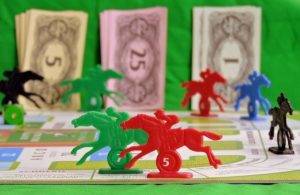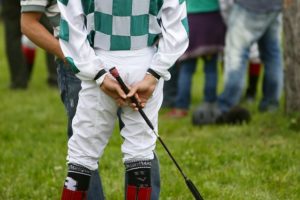How many times did Sir Gordon Richards win the Derby?
Sir Gordon Richards, who was knighted in 1953 in recognition of his services to horse racing, was arguably the most successful Flat jockey in British racing history. During an extraordinary career, between 1921 and 1954, Richards rode a total of 4,870 winners and became champion jockey on 26 occasions.
In 1947, Richards rode 269 winners, thereby setting a British record that would stand until beaten by the incomparable Sir Anthony McCoy 55 years later. Richards also enjoyed considerable success in British Classic races, winning the St. Leger five times, the 2,000 Guineas three times, the 1,000 Guineas three times and the Oaks twice.
However, for much of his career the most important Classic of all, the Derby, proved elusive. In fact, it was not until the so-called ‘Coronation’ Derby, run just five days after he had been knighted, in 1953, that Richards broke his duck in the Epsom Classic. On that occasion, he rode the 5/1 joint-favourite, Pinza, owned by Sir Victor Sassoon and trained by Norman Bertie. Shikampur, owned by the Aga Khan, led the field into the final quarter of a mile, but was soon tackled by Pinza, who drew away in the closing stages to win by four lengths. Aureole, owned by the Queen, came around the outside of the field to finish second, but was always in vain pursuit.
 Paul Nicholls has come a long way since he arrived at Manor Farm Stables in Ditcheat, Somerset with just eight horses. With the possible exception of his landlord, Paul Barber, no-one could really have predicted his rise to the top of his profession, where he has remained for over two decades. Nicholls did not become Champion National Hunt Trainer for the first time until 2005/06, but has done so a further eleven times since and remains one of just three men – the other two being Martin Pipe, who retired in 2006, and Nicky Henderson – to have won the trainers’ title since the turn of the century.
Paul Nicholls has come a long way since he arrived at Manor Farm Stables in Ditcheat, Somerset with just eight horses. With the possible exception of his landlord, Paul Barber, no-one could really have predicted his rise to the top of his profession, where he has remained for over two decades. Nicholls did not become Champion National Hunt Trainer for the first time until 2005/06, but has done so a further eleven times since and remains one of just three men – the other two being Martin Pipe, who retired in 2006, and Nicky Henderson – to have won the trainers’ title since the turn of the century. Traditionally, the Flat jockeys’ championship was decided on the number of winners ridden between Lincoln Day at Doncaster, in late March or early April, and November Handicap Day at the same venue, in early November. Those dates corresponded to the start and finish of the well-established Flat racing season on turf. However, since the advent of Flat racing on synthetic, or ‘all-weather’, surfaces in 1989, the start and finish of the turf season have become less meaningful. Indeed, the continued expansion of the all-weather programme has meant that Flat racing takes place on all bar three days of the year.
Traditionally, the Flat jockeys’ championship was decided on the number of winners ridden between Lincoln Day at Doncaster, in late March or early April, and November Handicap Day at the same venue, in early November. Those dates corresponded to the start and finish of the well-established Flat racing season on turf. However, since the advent of Flat racing on synthetic, or ‘all-weather’, surfaces in 1989, the start and finish of the turf season have become less meaningful. Indeed, the continued expansion of the all-weather programme has meant that Flat racing takes place on all bar three days of the year.